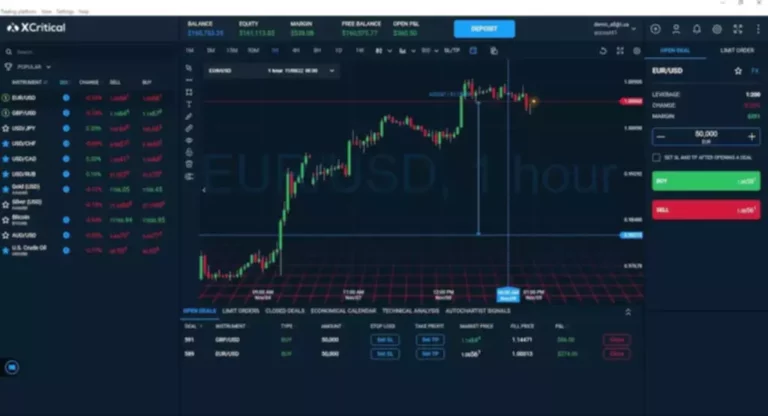In addition to hardware and software program wallets, there are also what’s often identified as hosted or custodial wallets. Rather, they’re a form of storage hosted by brokerages or online platforms similar to Robinhood. And relying on the brokerage or platform, this method could also be less protected, because the FTX implosion illustrated. If the brokerage fails or doesn’t handle your cash responsibly, the investment can be lost. You could use a burner pockets to, say, buy an NFT, switch the NFT and any remaining funds to your major wallet as quickly as the transaction is complete, after which delete the pockets.

Software wallets, which could be downloaded as cell or desktop applications, are often free to use. However, some software wallets could cost a small transaction charge when sending or receiving cryptocurrencies. Hardware wallets, then again, are physical devices that require a one-time purchase, which may vary from around $50 to $200, depending on the brand and features. In the rapidly evolving landscape of cryptocurrency, having a safe and functional crypto wallet is crucial. A crypto wallet acts as a digital vault for storing, sending, and receiving cryptocurrencies.
The Means To Set Up A Desktop Wallet
Use programming languages such as JavaScript, Python, or Solidity (for Ethereum-based wallets) to construct the logic and functionality of the wallet. Essentially, cryptocurrencies include digital, cryptographically protected entries in a distributed online database ledger generally recognized as a blockchain. A private key hyperlinks every entry and its corresponding worth to the key’s owner, who can authorize transactions related to that value. If you are most concerned about security, you may need to think about a hardware crypto pockets. These regularly come in the type of a USB stick that you can disconnect from your system (and the internet) for added safety. Some examples of popular hardware crypto wallets embrace Trezor ($63 to $220 for its two models) and the Ledger Nano X ($149).
Some companies might ask for a private key address as an alternative of a pockets handle so as for you to make a buy order. Some websites have a button that allows you to connect your pockets to the location for things like making bids on NFTs or investing in tokens to earn curiosity. The back-end of your crypto wallet will deal with varied functions like generating new pockets addresses, signing transactions, and interacting with the blockchain network.
Buy Crypto At Nice Charges With Bitpay
Storing a private key in your digital pockets essentially equates to storing your crypto funds there. If you have some cryptocurrency in a stock buying and selling account or crypto trade, you can transfer these funds to your wallet. Some wallets let you purchase or swap one cryptocurrency for an additional directly within the pockets for a fee. Once your crypto pockets is developed and tested, launch it in a controlled environment for person suggestions. Gather insights from users and iterate on the wallet’s options and consumer expertise based on their suggestions.
The other main distinction between wallets is whether they’re “hot” or “cold”. Hot wallets are all the time on-line, which, though securely encrypted, could make them more weak to theft. Cold wallets, however, are either online only for a quantity of moments at a time when importing a signed crypto transaction, or utterly incapable of connecting to the web. Always use a safe web connection — be cautious of free hotspots or unsecured or shared WiFi networks.
Establishing The Development Environment
You might additionally use this technique to unfold your cryptocurrency throughout completely different wallets to find a way to not have all of your digital currency eggs in a single basket, an method Dave Bitcoin says is an affordable one. But, in fact, it’s essential to maintain monitor of all your wallets, and once Cryptocurrency Wallet Development more, don’t lose your password and seed phrase for any of them. You’ll need to have an understanding of private and non-private keys to operate your crypto wallet. A public key is like your wallet’s tackle, where different users can ship you cryptocurrency. On the other hand, a private key is like the password to your wallet, which only you must know.

Building your personal crypto pockets might sound like a posh endeavor, however with the best guidance and instruments, you can create a personalized answer that meets your needs. In this step-by-step information, we’ll stroll you thru the process of crypto wallet improvement, guaranteeing security, functionality, and a deep understanding of the underlying know-how. Hardware wallets allow for storing cryptocurrency offline, which can be an added layer of security or comfort for some traders. The hardware is similar to USB drives and as such is a very cellular type of storage. A crypto wallet is a device designed to retailer and transfer your cryptocurrency through what’s known as self-custody.
Software wallets usually tend to be hacked—not by some nefarious online group targeting your valuable NFTs—but by person error. Test the pockets under varied scenarios, including creating new wallets, sending and receiving transactions, and handling edge circumstances such as inadequate balances or community congestion. Thoroughly test your crypto wallet to determine and rectify any bugs, vulnerabilities, or usability points.
Hardware wallets are one good way to make certain that your crypto wallet won’t suddenly be pilfered when you’re not on-line, but they have their drawbacks. Your hardware pockets might still be hacked when it’s plugged in and related on-line if your password and seed phrase are compromised. And anyone who’s lost information on a nasty flash drive or SD card is aware of that data saved on a portable hardware system is not 100% safe for long-term storage.
Tips On How To Set Up A Hardware Wallet
Going into “Receive” in your pockets ought to allow you to see your pockets handle for specific blockchains. You can copy that 25- to 30-character string and use it to allow somebody to send you cryptocurrency or transfer from another account. If the NFT market is what you’re thinking about, choose a wallet that can connect with NFT marketplaces such as OpenSea, SuperRare, and Solanart. Some of these marketplaces function on a selected blockchain, and that may determine your selection of wallet.

They could make it simpler to ship and receive digital cash to and from different people’s accounts, crypto exchanges, or digital marketplaces. And, as a end result of they’re usually decentralized, even if they’re created by an exchange like Coinbase Wallet or Binance’s Trust Wallet, you management the account. That means solely you may be answerable for what’s within the wallet, remembering the password and secret seed phrase that unlocks the wallet, and managing the funds that it holds. Opening a cryptocurrency pockets account is a vital step for anybody seeking to spend money on or use cryptocurrencies. To create a pockets account, there are some things that you have to think about, including selecting a pockets supplier, providing personal info, and having some cryptocurrency to store in your pockets. Whether you choose a software, hardware, or paper wallet, this information will allow you to understand what you need to open a crypto pockets account.
Person Feedback And Iteration
“It would also be value trying onto a multi-sig setup with the help of a service like Casa and selecting an acceptable stage of security based mostly on the amount concerned,” he said. Multi-signature wallets (“multi-sig” for short) require two or more personal keys in order to make a transaction, making it less probably somebody can hack a wallet’s personal key. Remember that the journey doesn’t finish with growth; steady maintenance, updates, and enhancements are important to maintain your pockets updated with the dynamic cryptocurrency panorama. By following this step-by-step guide, you’ll not only gain a deeper understanding of crypto pockets improvement but in addition contribute to the growing ecosystem of blockchain technology. The release of new features, bug fixes and safety patches are commonplace on the earth of software.
Hardware wallets like these made by Ledger or Trezor are broadly available for purchase either on-line or in-store out of your electronics retailer of selection. If you don’t care about NFTs and just want a place to store or to send and receive cryptocurrency, Coinbase, Trust Wallet, Atomic, and Exodus are good locations to begin. Regularly update your wallet https://www.xcritical.com/ to deal with points and introduce enhancements. The crypto landscape is dynamic, and staying up to date is essential to ensure your pockets stays functional and secure. Setting up a pockets is an easy, easy course of that might be completed in only a few steps.
- If you’re targeting Binance Smart Chain, Binance supplies a devoted development environment called Binance Smart Chain Studio, which simplifies the development process.
- The very first thing you need to resolve is what you propose to do with your cryptocurrency.
- Whether routinely generated along with your exchange account, or created on your own to self-custody, once your pockets is about up it is possible for you to to purchase, ship, swap and spend cryptocurrency nonetheless you need.
- Rather than cycling between apps and exchanges to find the best possible charges, BitPay makes it straightforward for any self-custody wallet consumer to buy crypto at nice rates and fast supply.
- Although most main exchanges are perfectly respected businesses, some crypto customers favor never to entrust their private keys with any third party.
This is a point that was made abundantly clear amid the current in a single day crash of FTX, which was the second-largest and fastest-growing crypto change. The full ramifications of FTX’s insolvency and demise remain unclear, but many buyers who had stored cryptocurrency on the trade stand to lose a fantastic deal. The most necessary part is finding a trusted exchange; just ensure to examine if there are any restrictions on your crypto from the wallet supplied by the platform. Now that we’re clear on what a crypto wallet is and isn’t, the next move is to decide on the proper wallet in your goals. User suggestions can provide priceless insights into how your wallet performs in real-world scenarios. Pay consideration to user experience feedback, security issues, and any recommendations for new features.
BitPay leverages partner relationships to save heaps of customers time and money by surfacing only the very best rates. Just search for the “Best Offer” flag and cease overpaying for crypto as soon as and for all. Buy crypto in the BitPay Wallet app or on-line and ship to any self-custody wallet address. You are in command of maintaining the keys to entry the cryptocurrency belongings, which could be problematic when you lose this info. A “private key” works similarly however for sending cryptocurrency to another person (or to a different wallet) out of your pockets.
If you follow the “three reminder taps” rule each time going out — telephone, keys, pockets — a crypto pockets is a bit easier. It’s both at all times with you on your cell device or laptop, or it stays at residence in your desktop or hardware system. Hardware wallets have a status for being more complicated to set up and use. Of course, that is dependent upon the device you choose, however the primary steps aren’t rather more complicated than what we’ve discussed for software program wallets.
